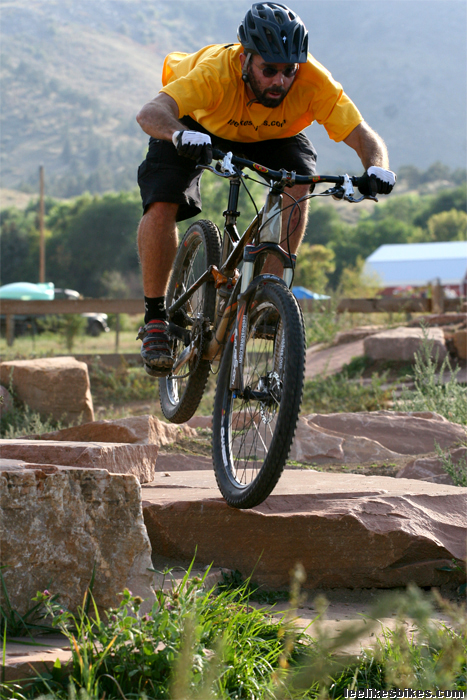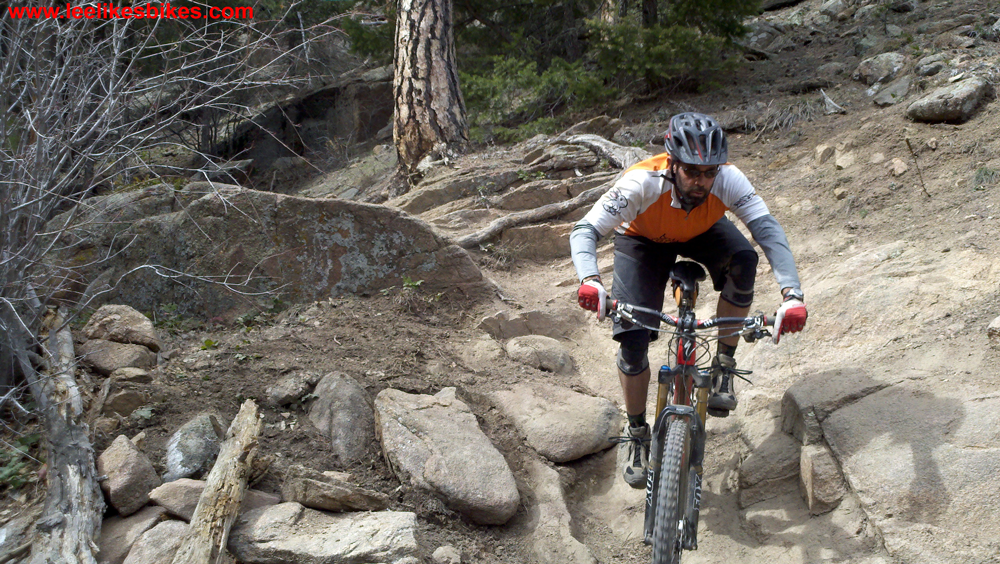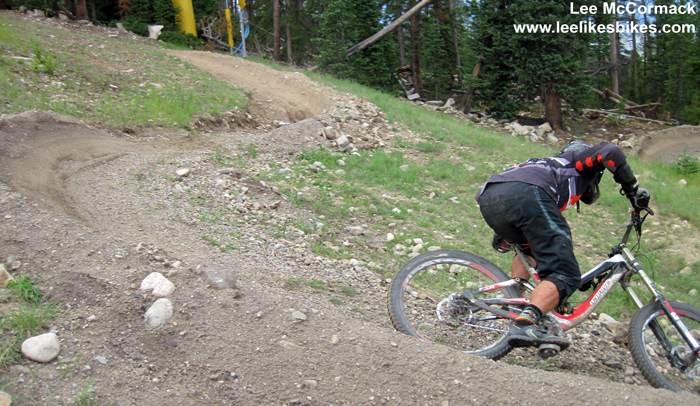Big suspension and big sine waves

Mike Levy at Pinkbike posted a must-read article:
The Argument For Short Travel Bikes – Opinion
Levy speaks a lot of truth. Here’s an additional thought:
 No matter what kind of bike you ride, you have to hop over huge rocks. That’s physically easier on a smaller bike with firmer suspension. 2010 Stumpjumper Pro Carbon with Brains front and rear. Check out Brains for braaap |
One of the keys to Riding (capital R) is the ability to load and unload in phase with the terrain. You erase impacts and create propulsion while separating your body from trail chaos. We call this skill “pump.” Pump is the key to increased control, smoothness and speed in all kinds of situations. It also improves your test scores and helps you attract a hot wife. It has for me, anyway.
In order to pump well, you must be able to connect very heavily with the ground then disconnect just as lightly. In other words, you need to create sine waves: light over frontsides and chaos; heavy on backsides, in corners and under braking.
If you want your bike and body to move in a certain direction, you need to push the Earth in the opposite direction.
Suspension mutes this connection, and the more suspension you have, the more vague the feel. Yes, the suspension insulates you from rocks, roots, holes, weakness, laziness and suckiness. But it also demands more range of motion, aggressiveness and strength to ride in phase with the terrain. On a DH bike, most mortals are likely to wallow in the travel — not feeling the hits but also never generating the sine wave they need to truly rip.
Smart suspension tuning can help you achieve that perfect blend of firmness and plushness that lets you pump when you want to and plow when you need to, but in general:
The more insulation you have from the terrain, the more insulation you have from truly ripping. Zero suspension rewards pump but punishes mistakes. Mega suspension erases mistakes but mutes pump.
Two kinds of bumps
Let’s boil every trail obstacle down to two kinds of bumps: 1) the little bumps you should ignore and 2) the big bumps you should pump.
The bigger your wheels and the longer your travel, the bigger the bumps you can ignore. You can process less intricate data and ride a bigger sine wave. That jagged outcropping? Ignore the details and treat it like one big roller. Light over the front, heavy down the back. Nice. That’s what suspension is for.
A downhill bike has eight to 10 inches of travel, but only in the most violent moments. Your arms and legs have 20 inches or more — and that travel is smart: You can unload before you hit bumps. Plus you can use your body travel whenever you want, not just when you bash into something.
So: Arms and legs are way better than suspension. But the more suspension you have, the harder it is to use your arms and legs.
Therein lies the compromise. Very few of us are aggressive or powerful enough to pump downhill or even all-mountain bikes. For most of us on most trails, the right amount of suspension is somewhere in the middle. We need a bike that’s smooth enough to absorb chatter, yet firm enough to pump.
I’m loving my 5-inch Stumpjumper 29 on trails I used to ride on the downhill bike.
 Not only does my 2012 Stumpjumper Expert Carbon with FOX 34 and Shimano XTR climb way better than a bigger bike, it’s more fun to ride at reasonable speed with reasonable effort. |
Downhill bikes are rad. They encourage us to see farther, ride faster, create bigger shapes and possibly achieve a higher level of flow — especially in truly gnarly terrain. All it takes is skill, strength and vision. But that’s another post.
 Smashing big sine waves on the big bike. My 2012 Demo 8, now with a FOX 40, rewards hard work with huge flow. |
Braaap! Keep it up Mike!
Lee
Know more. Have more fun!
Join the leelikesbikes mailing list:

Leave a Reply
Want to join the discussion?Feel free to contribute!